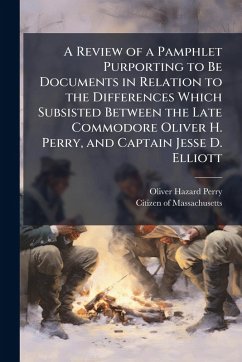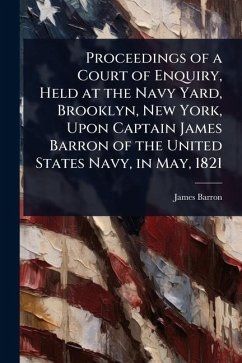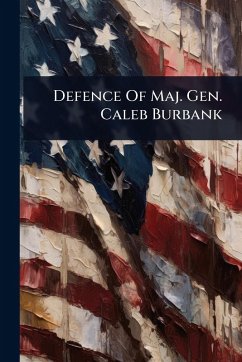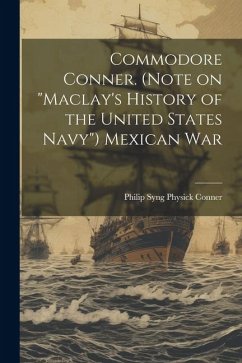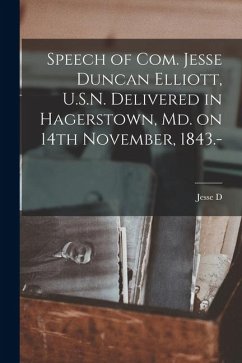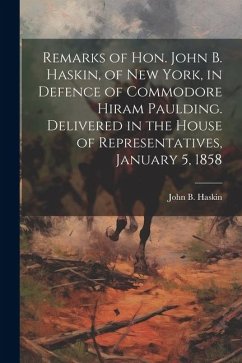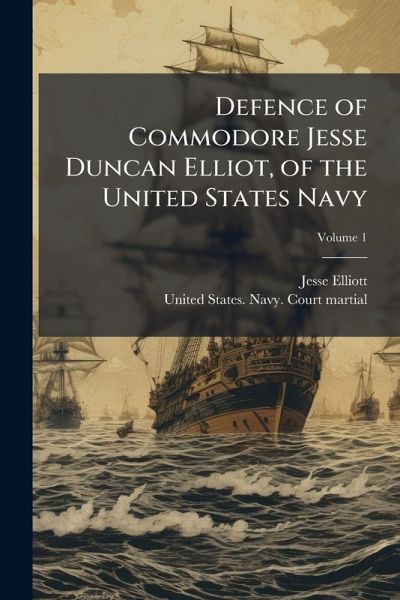
Defence of Commodore Jesse Duncan Elliot, of the United States Navy

PAYBACK Punkte
7 °P sammeln!
This is Volume 1 of the "Defence of Commodore Jesse Duncan Elliot, of the United States Navy," presenting a detailed account of the proceedings and arguments surrounding the court-martial of Commodore Elliott in 1840. The work provides significant insight into the controversies and challenges faced by naval officers during this period of American maritime history. Including primary source documents and testimonies, this volume offers a comprehensive view of the accusations against Elliott and his efforts to defend his reputation and career within the U.S. Navy. This work has been selected by s...
This is Volume 1 of the "Defence of Commodore Jesse Duncan Elliot, of the United States Navy," presenting a detailed account of the proceedings and arguments surrounding the court-martial of Commodore Elliott in 1840. The work provides significant insight into the controversies and challenges faced by naval officers during this period of American maritime history. Including primary source documents and testimonies, this volume offers a comprehensive view of the accusations against Elliott and his efforts to defend his reputation and career within the U.S. Navy. This work has been selected by scholars as being culturally important, and is part of the knowledge base of civilization as we know it. This work was reproduced from the original artifact, and remains as true to the original work as possible. Therefore, you will see the original copyright references, library stamps (as most of these works have been housed in our most important libraries around the world), and other notations in the work. This work is in the public domain in the United States of America, and possibly other nations. Within the United States, you may freely copy and distribute this work, as no entity (individual or corporate) has a copyright on the body of the work. As a reproduction of a historical artifact, this work may contain missing or blurred pages, poor pictures, errant marks, etc. Scholars believe, and we concur, that this work is important enough to be preserved, reproduced, and made generally available to the public. We appreciate your support of the preservation process, and thank you for being an important part of keeping this knowledge alive and relevant.




